Special Vehicle Combat Training Simulator Virtual Reality Solution
Virtual technology was developed by NASA and the military for simulation training. It is now widely used in tactical research, exercises, simulation training and training for various arms. The combat laboratory has become the battlefield for CNC fighters. The "Military Military Exercises" have also become an important form of military exercises that can be used to provide reference data for future warfare organization, leadership, and comprehensive training.
With the rapid development of military science and technology, the use of computer networks for "online military training" has become one of the main methods of military training in many countries. With the support of computer simulation technology, virtual reality simulation training has become a main method of military combat simulation training at this stage. Since the early 1990s, the United States has taken the lead in applying virtual reality technology to the military field. Many countries in the world are also expanding virtual reality technology into the military field to reduce personnel, material losses and training funds in actual combat. In recent years, the use of this training method to organize combat training has not only greatly improved the training benefits, but also enabled the military to exercise in the "cool" combat environment.
system introduction:In response to the military's demand for virtual combat training, Shanghai Keliang proposed a virtual reality solution based on commercial shelf products combined with special needs. The whole system includes: monitoring management host, central control system, simulation computing unit, virtual driving visual system, wireless positioning system, simulated cockpit system and motion simulation control system.
The simulation calculation unit completes the dynamic model calculation and virtual scene interaction calculation of the vehicle in real time, and simultaneously performs data interaction with the virtual driving visual system, the simulated cockpit system, the wireless positioning system and the motion simulation control system. The virtual driving visual system mainly completes the display of the three-dimensional animated scene and the restoration of the sound effect space, wherein the visual scene includes a dynamic scene outside the vehicle and a virtual display of the steering wheel and the instrument of the cab, and is realized by a display or a digital helmet to increase vision and Hearing sensation. The simulated cockpit system is used to simulate the real cockpit environment. On the one hand, the real dial can be arranged. On the other hand, the data glove can be used to interact with the virtual dial to realize the flexible configuration of the system. The wireless positioning system is used to identify the body movements of the human body, generate three-dimensional data of the limbs, and provide graphic interference data for the virtual instrument manipulation, which is the basis for realizing virtual driving. The motion simulation control system mainly realizes the virtual body feeling, and shows the physical force situation during the real driving process through the motion platform, thereby increasing the body immersion.
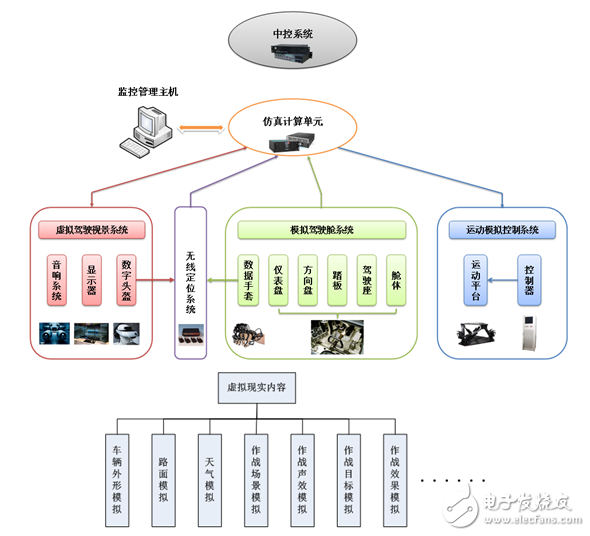
The shape of the vehicle includes main battle tanks, armored vehicles, transport vehicles, etc.;
Road surface includes: mud, snow, sand, roads, grass, etc.;
Weather includes: full-time lighting simulation, night scenes, sand dust, etc.
Operational scenarios include: cities, plains, hills, bays, etc.;
Combat sound effects include: shots of shells, explosions of explosions, sounds of armor jumps, collapse of buildings, and various sounds during driving;
Combat objectives include: tank groups, target bases, buildings, etc.;
Combat effects include: vehicle destruction, armor display, bullet display, and vibration visual effects.
Virtual reality is a combination of multiple technologies, including real-time 3D computer graphics technology, wide-angle (wide-view) stereo display technology, tracking technology for viewers' heads, eyes and hands, stereo, and tactile/force feedback.
Ø Real-time 3D computer graphics
Real-time 3D computer graphics are graphical images produced using computer models. By building a sufficiently accurate 3D model and using a real-time simulation environment, accurate images of various objects under different lighting conditions can be generated. For example, in a tank simulation system, a real-time simulation environment is used to ensure image refresh rate and image quality, and simulate a very complex virtual environment.
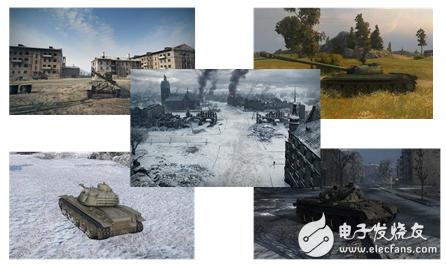
Ø Stereoscopic display technology
When people look at the world around them, because the positions of the two eyes are different, the images obtained are slightly different. These images are merged in the brain to form a whole picture about the surrounding world. This scene includes information about the distance. . Of course, the distance information can also be obtained by other methods, such as the distance of the eye focal length, the comparison of the object size, and the like.
Binocular stereoscopic vision plays a big role in virtual reality systems. The different images seen by the user's two eyes are generated separately and displayed on different displays. Some systems use a single display, but after the user wears special glasses, one eye can only see odd frames, the other eye can only see even frames, and the difference between odd and even frames is parallax. It produces a three-dimensional feeling.
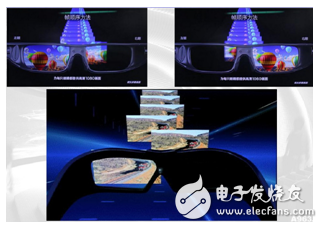
Ø User (head, eye) tracking
In an artificial environment, each object has a position and attitude relative to the system's coordinate system, and so does the user. The scene that the user sees is determined by the location of the user and the direction of the head (eye).
Virtual reality helmet tracking head movement: In traditional computer graphics technology, the change of field of view is realized by mouse or keyboard, the user's visual system and motion perception system are separated, and the head tracking is used to change the image. The perspective between the user's visual system and the motion perception system can be linked and feels more realistic. Another advantage is that the user can not only recognize the environment through binocular stereo vision, but also observe the environment through the movement of the head.
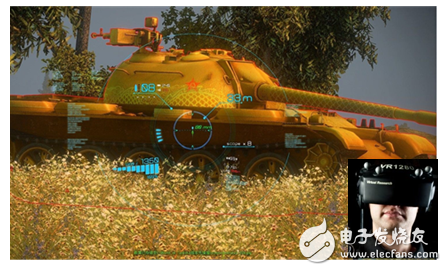
Ø sound
People can well determine the direction of the sound source. In the horizontal direction, we determine the direction of the sound by the difference in phase and intensity of the sound, because the time or distance at which the sound reaches the two ears is different. The common stereo effect is achieved by hearing the different sounds recorded at different locations on the left and right ears, so there is a sense of direction. In real life, when the head turns, the direction of the sound heard changes. A true stereo effect is created by a surround sound system that cooperates with the head motion recognition system.
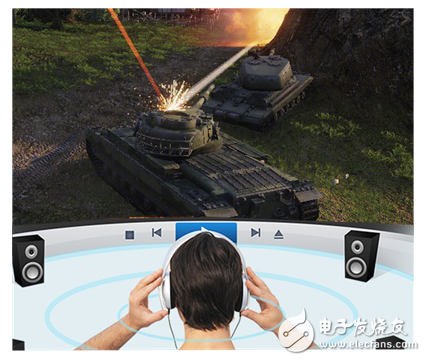
Ø Sensory feedback
In a virtual reality system, the user can see a virtual cup. You can try to catch it, but your hand doesn't really touch the cup and it's possible to cross the "surface" of the virtual cup, which is impossible in real life. A common device to solve this problem is to simulate the sense of touch through data gloves with vibrating contacts. The position of the human body and the hand (space coordinates) is determined by the wireless positioning system, and it is judged whether it is in contact with the scene object by interference with the scene in the virtual reality, and the touch of the contact is controlled by the contact of the vibration to realize the true fusion with the virtual scene.
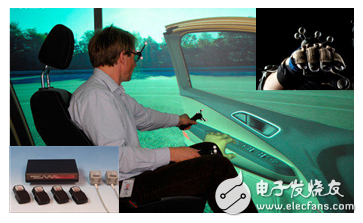
Combat visual effects:

The system can be applied to aircraft, automobiles, ships and other fields. By simulating multiple types of environments, it can realistically present various environmental conditions during driving, helping users to achieve adaptive training for occupants and reducing training costs.
KNM3 Series Moulded Case Circuit Breaker
KNM3 series Moulded Case Circuit Breaker is MCCB , How to select good Molded Case Circuit Breaker suppliers? Korlen electric is your first choice. All moulded Case Circuit Breakers pass the CE.CB.SEMKO.SIRIM etc. Certificates.
Moulded Case Circuit Breaker /MCCB can be used to distribute electric power and protect power equipment against overload and short-current, and can change the circuit and start motor infrequently. The application of Moulded Case Circuit Breaker /MCCB is industrial.
Korlen electric also provide Miniature Circuit Breaker /MCB. Residual Current Circuit Breaker /RCCB. RCBO. Led light and so on .
KNM3 series Molded Case Circuit Breaker,Small Size Molded Case Circuit Breaker,Electrical Molded Case Circuit Breaker,Automatic Molded Case Circuit Breaker
Wenzhou Korlen Electric Appliances Co., Ltd. , https://www.korlen-electric.com